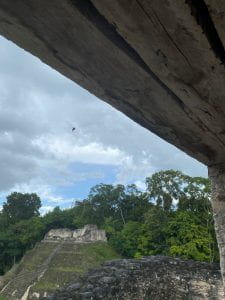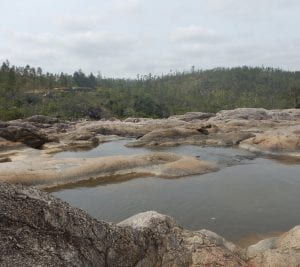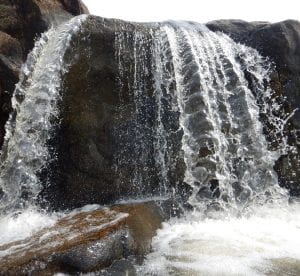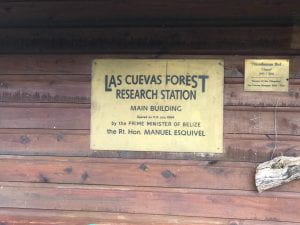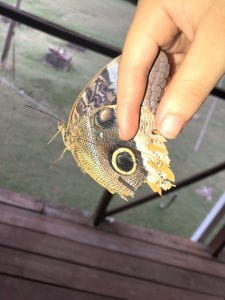“Toto, I’ve got a feeling we’re not in Kansas anymore.” Today, our group officially entered the jungle with a tour of the ruins of Caracol and a hike around Las Cuevas Research Station. While I encountered neither an amphibian nor an angelfish (I would have been really surprised to see that one), we saw many amazing species. While at Caracol, we observed a species of bird called Montezuma’s Oropendola. This species has a long tail with yellow feathers and builds pendulum-shaped nests. Our guide, Leo, noted that if the female Oropendola does not approve of a nest, she will push it to the ground and the male Oropendola will have to build another. We also observed several Howler monkeys (including a baby Howler monkey) and a Toucan from the road out of Caracol.
Caracol is a site of ancient Mayan ruins and we had the unique opportunity to climb the stairs to several large temples. I particularly enjoyed the view of the surrounding forest from the top. One of the structures we climbed remains the tallest building in Belize to this day. I learned a lot about Mayan culture and traditions, including their practice of playing ball games in large areas surrounded by rock walls, sometimes as a means of war.




After the tour of Caracol, our group arrived at Las Cuevas Research Station. We took a short hike around the area and observed several epiphytes and ant species. We discussed a bit about the mutualistic relationship between the bull-horned acacia and acacia ants after observing them on the trail. Acacia ants will fight anything that touches the acacia plant in exchange for food and shelter.
It was exciting to see these species in person after learning about them in biology classes in prior years.
We ended the day with dinner (pork, mashed potatoes, bread, and vegetables) and presentations. I am looking forward to exploring Las Cuevas more tomorrow with our first big project! I plan to wake up around 6 to bird watch before breakfast. That’s all for now!







